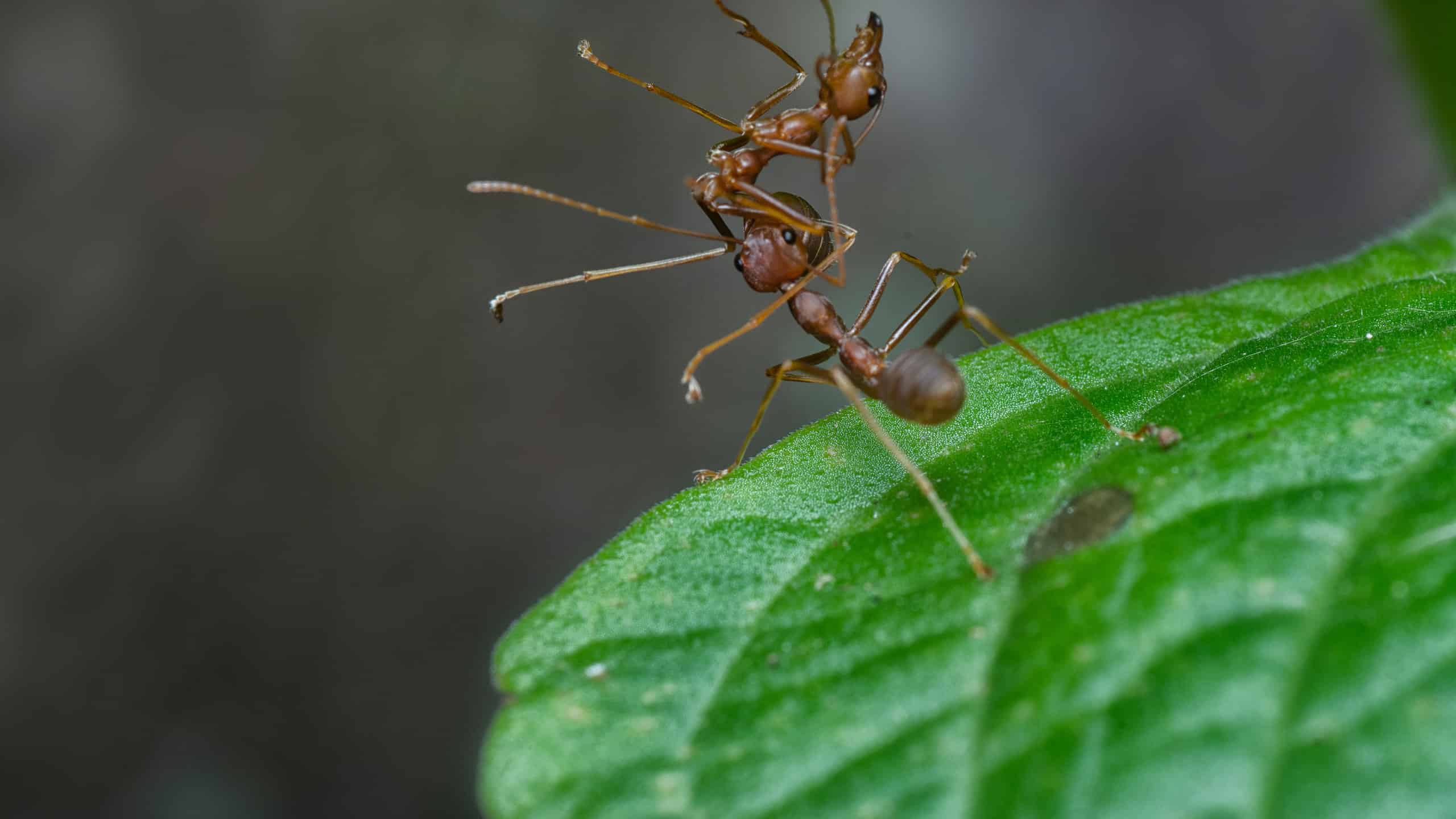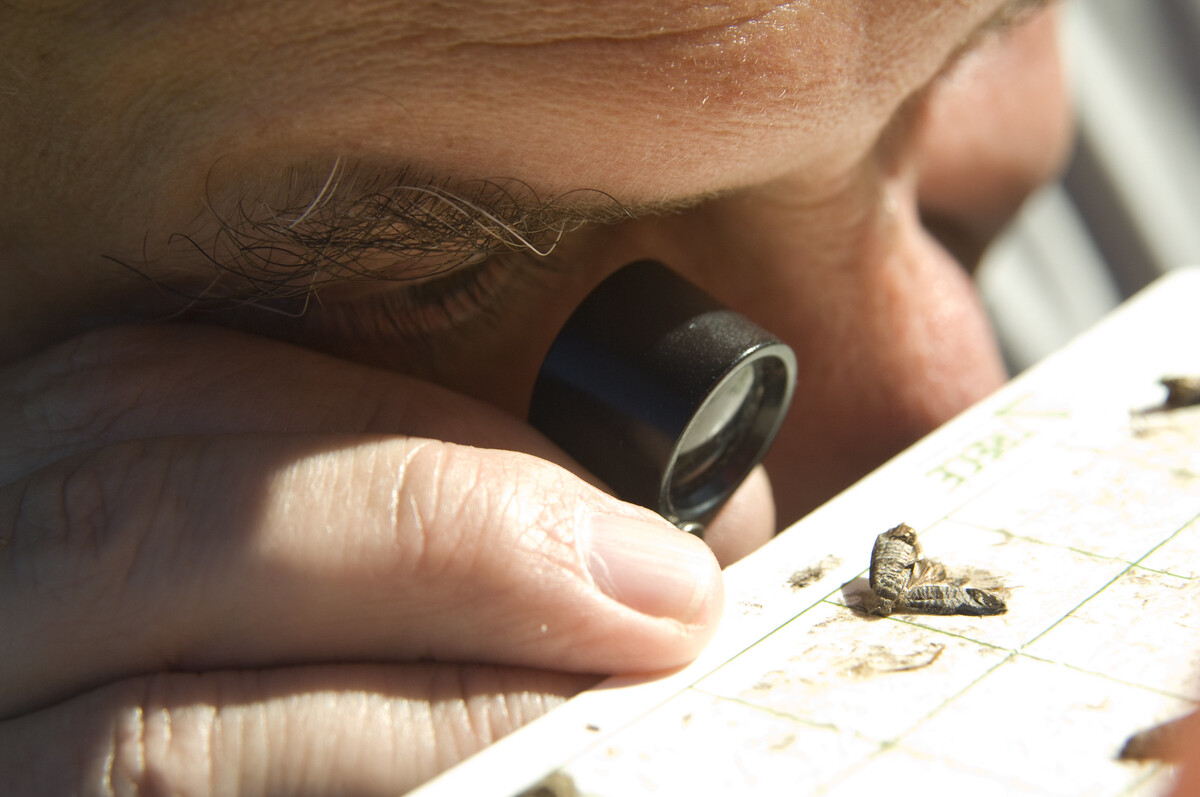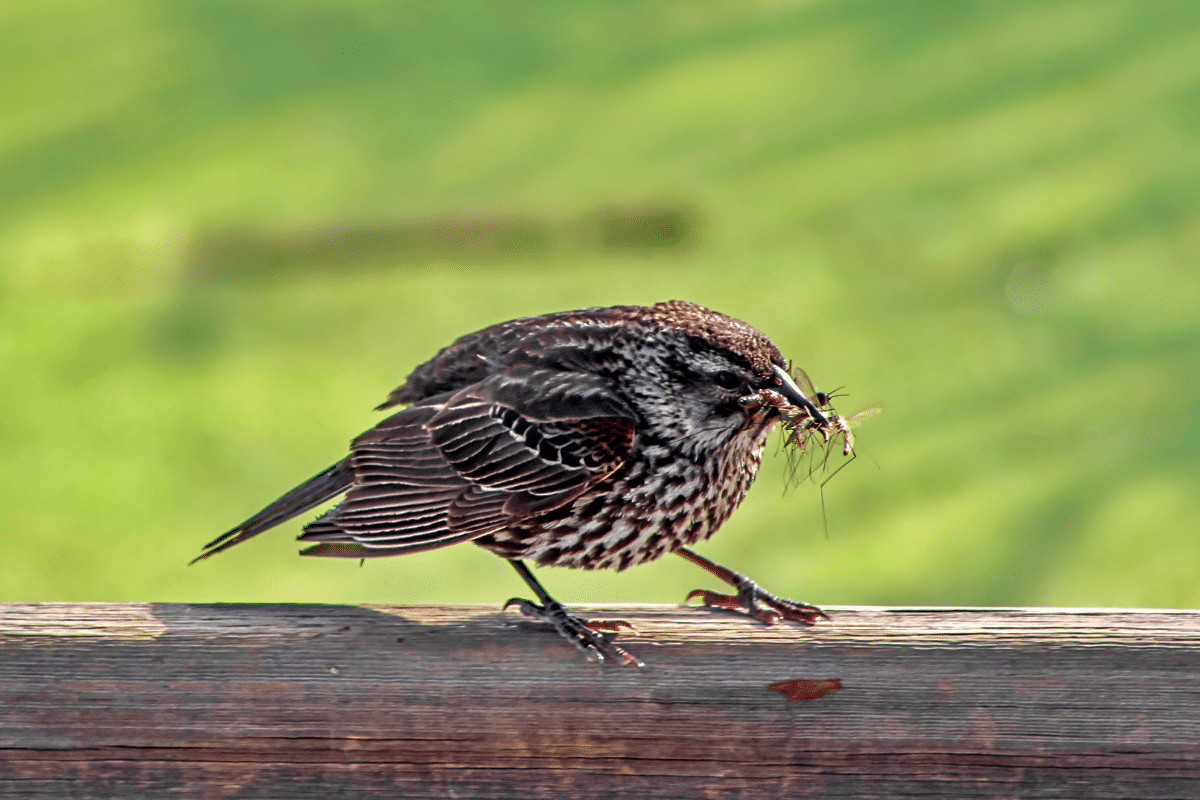Home>Gardening News and Trends>Latest News>Finding Dead Insects Or Mouse Droppings In The Kitchen Indicates Which Of The Following


Latest News
Finding Dead Insects Or Mouse Droppings In The Kitchen Indicates Which Of The Following
Published: November 28, 2023
Looking for the latest news on finding dead insects or mouse droppings in the kitchen? Discover what it indicates and stay informed with our updates.
(Many of the links in this article redirect to a specific reviewed product. Your purchase of these products through affiliate links helps to generate commission for Chicagolandgardening.com, at no extra cost. Learn more)
Table of Contents
- Introduction
- Significance of Finding Dead Insects or Mouse Droppings in the Kitchen
- Common Types of Insects Found in the Kitchen
- Potential Health Hazards Associated with Dead Insects and Mouse Droppings
- Identifying Dead Insects in the Kitchen
- Identifying Mouse Droppings in the Kitchen
- Steps to Take if Dead Insects or Mouse Droppings are Found in the Kitchen
- Preventive Measures to Avoid Dead Insects and Mouse Droppings in the Kitchen
- Conclusion
Introduction
Discovering dead insects or mouse droppings in your kitchen can be a disconcerting experience. Not only does it indicate a potential pest infestation, but it also poses health risks. It is important to address this issue promptly to maintain a clean and safe environment for you and your family.
The presence of dead insects or mouse droppings in the kitchen is a clear indication of an underlying problem. It could be due to poor hygiene practices, structural vulnerabilities that allow pests to enter, or inadequate pest control measures.
In this article, we will explore the significance of finding dead insects or mouse droppings in the kitchen, the potential health hazards associated with them, and steps you can take to address and prevent such issues.
Understanding the implications of these findings and taking appropriate action is crucial for maintaining a healthy and pest-free kitchen environment. Let’s delve into the details and equip ourselves with the knowledge to tackle this problem effectively.
Significance of Finding Dead Insects or Mouse Droppings in the Kitchen
Discovering dead insects or mouse droppings in your kitchen is not just a cause for concern; it is a clear indication that there is a pest infestation problem. Ignoring or neglecting these signs can lead to further issues, including the spread of disease and damage to your property.
One of the primary reasons why finding dead insects or mouse droppings in the kitchen is significant is that it suggests an active pest presence. Insects such as cockroaches, ants, and flies are often attracted to food sources, and their presence in your kitchen signifies that they have found a reliable food supply in your home. Similarly, mouse droppings indicate the presence of rodents, which can cause extensive damage and contaminate food with their feces and urine.
Another important aspect to consider is the potential for health hazards. Dead insects and mouse droppings can carry a variety of pathogens that can contaminate surfaces, utensils, and food. These pathogens may cause a range of illnesses, including salmonellosis, gastroenteritis, and hantavirus. People with allergies or asthma may also experience worsened symptoms when exposed to dead insects or mouse droppings.
Furthermore, finding dead insects or mouse droppings in the kitchen can be an indication of poor hygiene practices or structural vulnerabilities. It is crucial to identify the underlying cause behind the pest infestation and take appropriate action to prevent its recurrence. This may involve sealing entry points, improving sanitation practices, and implementing effective pest control measures.
To summarize, finding dead insects or mouse droppings in the kitchen is significant because it indicates an active pest infestation, poses health risks, and points to potential issues with hygiene and structural vulnerabilities. Timely attention and appropriate measures are essential to address these problems and ensure a safe and pest-free kitchen environment.
Common Types of Insects Found in the Kitchen
When it comes to the kitchen, certain types of insects are more likely to invade this space in search of food, water, and shelter. Understanding the common culprits can help you identify the pests and take appropriate action to eliminate them. Here are some of the most common types of insects found in the kitchen:
- Cockroaches: Cockroaches are notorious for infesting kitchens. They are attracted to food residue, warm conditions, and water sources. These pests are resilient, reproduce rapidly, and can carry disease-causing pathogens.
- Ants: Ants are attracted to sweet and greasy food spills. They leave scent trails to communicate with the colony, making them skilled at locating food sources. While most ants are harmless, some species can contaminate food.
- Flies: Flies are commonly found around kitchen areas due to their attraction to food and organic waste. They can carry pathogens and contaminate surfaces and food. Common types of flies found in the kitchen include fruit flies and house flies.
- Pantry Pests: Pantry pests such as beetles, weevils, and moths are known for infesting stored food products. These insects can enter your kitchen through infested food packages and can quickly multiply if not addressed.
- Silverfish: Silverfish are nocturnal insects that thrive in warm and humid environments. They are often found in dark, damp areas of the kitchen such as under sinks or behind appliances. Silverfish feed on starchy foods, paper, and glue.
It’s important to note that the presence of these insects in your kitchen is not only a nuisance but can also pose health risks. They can contaminate food, surfaces, and utensils with their feces, saliva, and body parts, potentially leading to foodborne illnesses and allergic reactions.
If you spot any of these common kitchen invaders, it is crucial to take proactive measures to eliminate them and prevent future infestations. By maintaining cleanliness, practicing proper food storage, and addressing any structural vulnerabilities, you can create a less attractive environment for these pests.
Potential Health Hazards Associated with Dead Insects and Mouse Droppings
Discovering dead insects or mouse droppings in your kitchen is not only unsightly but also poses potential health hazards. These hazards arise from the various pathogens and allergens that these pests can carry. It is essential to understand these health risks to take appropriate action and maintain a safe and healthy kitchen environment.
Dead insects can harbor bacteria, viruses, and parasites that can contaminate surfaces, utensils, and food. When these contaminated items come into contact with food, there is a risk of foodborne illnesses. Certain insects, like cockroaches, are known to carry bacteria such as Salmonella and E. coli. These bacteria can cause severe gastrointestinal infections and lead to symptoms such as nausea, vomiting, diarrhea, and abdominal pain.
In addition to bacteria, dead insects can also carry viruses. Flies, for example, are known to carry and spread pathogens such as the norovirus, which can cause stomach flu-like symptoms. These viruses can easily transfer to surfaces and food, increasing the risk of infection.
Allergens are another concern when it comes to dead insects and mouse droppings. The bodies and feces of certain pests can contain proteins that trigger allergic reactions in sensitive individuals. Common symptoms of insect and rodent allergies include sneezing, coughing, wheezing, itching, and skin rashes. Prolonged exposure to these allergens can worsen asthmatic symptoms in individuals with asthma.
Furthermore, mouse droppings pose their own set of health risks. These droppings can contain the hantavirus, a potentially life-threatening virus that can cause Hantavirus Pulmonary Syndrome (HPS). HPS symptoms include fever, muscle aches, difficulty breathing, and in severe cases, can lead to respiratory failure.
To mitigate these potential health hazards, it is crucial to remove dead insects and clean up mouse droppings properly. Care should be taken not to disperse the allergens or pathogens into the air while cleaning. It is also essential to thoroughly sanitize affected surfaces and items to eliminate any remaining contaminants.
Regular pest control measures should be implemented to prevent infestations and minimize the risk of health hazards associated with dead insects and mouse droppings. By addressing these issues promptly and practicing good hygiene, you can maintain a safe and healthy kitchen environment for you and your family.
Identifying Dead Insects in the Kitchen
Identifying dead insects in the kitchen is an important step in understanding the extent of a pest problem and taking appropriate action. By recognizing the specific types of insects found, you can determine the most effective methods to control and prevent future infestations.
Here are some tips to help you identify dead insects in your kitchen:
- Visual Clues: Examine the appearance, size, and color of the dead insects. This can provide valuable information about the species and potential sources of infestation. For example, small reddish-brown insects with a flattened shape may indicate a presence of bed bugs.
- Trails or Infestation Signs: Dead insects may leave behind trails or signs of infestation. Look for droppings, shed skin, egg cases, or evidence of feeding in and around the kitchen area. This can help identify the extent of the pest problem.
- Distinctive Characteristics: Some insects have distinctive features that can aid in identification. For instance, cockroaches have six legs, two long antennae, and a flat oval-shaped body. Ants have segmented bodies and elbowed antennae.
- Source of Attraction: Consider the areas or food sources that may be attracting the insects. Certain pests are more likely to infest specific areas of the kitchen. For example, fruit flies are attracted to ripening fruits and fermenting liquids.
If you are unsure about the type of dead insect you have found, it is best to consult with a pest control professional or entomologist. They can provide accurate identification and offer guidance on the appropriate methods for eradication.
Keep in mind that dead insects can be an indication of a larger infestation problem, even if you only find one or two. Taking immediate action to remove the dead insects and address the underlying issue can help prevent further infestation and potential health risks.
Remember to exercise caution when handling dead insects in the kitchen. Wear gloves and use proper sanitation practices to minimize the risk of spreading any pathogens or allergens they may carry. Dispose of the dead insects in a sealed plastic bag and clean affected areas thoroughly.
By identifying the dead insects in your kitchen, you can take proactive steps to eliminate them and prevent future infestations. Regular monitoring and maintenance will help keep your kitchen free from unwanted pests.
Identifying Mouse Droppings in the Kitchen
Identifying mouse droppings in the kitchen is crucial in determining if you have a mouse infestation and taking appropriate measures to address the problem. Mouse droppings are a telltale sign of rodent activity and require immediate attention to prevent further infestation and potential health risks.
Here are some key characteristics to help you identify mouse droppings:
- Size and Shape: Mouse droppings are typically small, resembling dark grains of rice. They are approximately 1/4 to 1/2 inch long and have pointed ends.
- Color: Fresh mouse droppings are dark brown or black, while older droppings may turn lighter in color.
- Texture and Consistency: Mouse droppings are solid and firm in texture. They do not crumble easily when touched.
- Location: Mouse droppings are often found near areas where mice frequent, such as along walls, near food sources, or inside cabinets and drawers. Pay close attention to places where food containers or packaging have been gnawed or disturbed.
- Quantity: If you find a large number of mouse droppings in your kitchen, it may indicate a significant infestation that needs immediate attention.
It is important to note that mouse droppings can pose health risks. They can contain harmful bacteria, such as Salmonella and Hantavirus, which can cause severe illness in humans. Therefore, it is crucial to handle mouse droppings with caution to minimize the risk of exposure to these pathogens.
When identifying mouse droppings, always wear gloves and a mask to protect yourself. Avoid direct contact with the droppings or accidentally inhaling particles that may become airborne during cleaning.
If you suspect that you have a mouse infestation based on the presence of droppings, it is recommended to contact a professional pest control service. They can assess the extent of the infestation, identify potential entry points, and implement effective methods to eliminate the mice and prevent their return.
Proper sanitation and hygiene practices are essential in dealing with mouse droppings. Thoroughly clean and sanitize any affected surfaces, utensils, and food storage areas using a bleach solution or disinfectant. Dispose of the droppings safely in sealed plastic bags.
By identifying mouse droppings promptly and taking appropriate action, you can address the mouse infestation, minimize health risks, and maintain a clean and safe kitchen environment.
Steps to Take if Dead Insects or Mouse Droppings are Found in the Kitchen
Discovering dead insects or mouse droppings in your kitchen requires immediate action to address the issue and prevent further infestations. Follow these essential steps to effectively deal with the situation:
- Wear Protective Gear: Before handling dead insects or mouse droppings, put on disposable gloves and a mask to protect yourself from potential pathogens or allergens.
- Remove Dead Insects: Using a tissue or paper towel, carefully pick up the dead insects and place them in a sealed plastic bag. Seal the bag tightly to prevent any further contamination.
- Clean and Disinfect: Thoroughly clean the affected area with a household disinfectant, paying attention to the surfaces where the dead insects or droppings were found. Use a bleach solution or a disinfectant specifically designed for pests.
- Dispose of Waste Properly: Seal the plastic bag containing the dead insects and dispose of it in an outdoor trash container. Avoid placing it in a bin inside the kitchen to prevent attracting more pests.
- Inspect and Identify the Source: Look for any signs of infestation or potential entry points in your kitchen. Check for cracks, gaps, or leaks that pests could be using to access your kitchen.
- Implement Pest Control Measures: Depending on the severity of the infestation, you may need to seek professional pest control services. They can identify the source of the problem and provide appropriate treatment plans or preventive measures.
- Maintain Proper Hygiene: Keep your kitchen clean by regularly wiping down surfaces, sweeping the floors, and properly storing food in airtight containers. Remove any food spills or crumbs that could attract pests.
- Seal Entry Points: Close off any potential entry points that pests may be using to enter your kitchen. Seal cracks, gaps, and openings around doors, windows, pipes, and vents with caulk or other suitable materials.
- Monitor the Situation: Keep an eye out for any signs of pest activity in the kitchen. Regularly inspect the surroundings to catch any infestation at an early stage and take immediate action.
Remember, prevention is key to avoiding future infestations. By practicing good hygiene, sealing entry points, and implementing proactive pest control measures, you can minimize the risk of encountering dead insects or mouse droppings in your kitchen.
If the issue persists or if you are unsure about the severity of the infestation, it is always advisable to seek professional assistance. Pest control experts have the knowledge and tools to effectively eliminate pests and provide long-term prevention strategies.
Preventive Measures to Avoid Dead Insects and Mouse Droppings in the Kitchen
Prevention is key when it comes to avoiding the presence of dead insects and mouse droppings in your kitchen. By implementing these preventive measures, you can create an environment that is less attractive to pests and minimize the risk of infestations:
- Maintain Cleanliness: Keep your kitchen clean and free from food debris. Clean up spills and crumbs immediately, regularly sweep or vacuum the floors, and wipe down countertops and surfaces.
- Proper Food Storage: Store food in airtight containers to prevent access for pests. Be mindful of the expiration dates of products and discard any expired or damaged items.
- Invest in Trash Cans: Use trash cans with tight-fitting lids to prevent pests from accessing food scraps. Regularly empty and clean the trash cans to avoid attracting insects or rodents.
- Seal Entry Points: Inspect your kitchen for any cracks, gaps, or openings that pests could use to enter. Seal these entry points using caulk or appropriate materials to prevent their access.
- Install Screens: Fit mesh screens over windows and ventilation openings to prevent pests from entering while still allowing for proper air circulation in the kitchen.
- Fix Plumbing Leaks: Pests are attracted to moisture, so repair any plumbing leaks promptly. Be sure to dry wet areas, and regularly clean sinks, drains, and pipes to prevent standing water and dampness.
- Regularly Inspect and Clean Appliances: Remove and clean behind appliances such as refrigerators and stoves, as food particles can accumulate in these areas and attract pests.
- Trim Vegetation: Keep vegetation, such as trees and shrubs, trimmed away from the exterior of your kitchen. Overhanging branches or shrubs can provide access points for pests.
- Store Firewood Properly: If you store firewood near your kitchen, ensure it is stored away from the house and elevated off the ground to prevent pests from nesting in it.
- Professional Pest Control: Consider scheduling regular inspections and treatments by a professional pest control service. They can assess the risk of infestations and implement preventive measures specific to your kitchen.
By incorporating these preventive measures into your kitchen routines, you can significantly reduce the likelihood of encountering dead insects and mouse droppings. A clean and well-maintained kitchen is less attractive to pests and creates a healthier and safer environment for you and your family.
Remember, prevention is more effective than dealing with an infestation after it occurs. Stay vigilant, address any signs of pest activity promptly, and implement these preventive measures to keep your kitchen pest-free.
Conclusion
Discovering dead insects or mouse droppings in the kitchen can be alarming, but it serves as a clear indication of a potential pest infestation. Taking immediate action to address the issue is crucial to maintain a clean and safe kitchen environment for you and your family.
Throughout this article, we have explored the significance of finding dead insects or mouse droppings in the kitchen, discussed the common types of insects that can be found, and highlighted the potential health hazards associated with them. We have also provided guidance on identifying and dealing with dead insects, as well as steps to take if mouse droppings are found.
To prevent the occurrence of dead insects or mouse droppings in your kitchen, it is essential to practice good hygiene, implement proper food storage techniques, and regularly inspect and maintain your kitchen for potential entry points. By following these preventive measures, you can minimize the risk of infestations and create an environment that is less attractive to pests.
In cases where the infestation persists or if you need assistance in dealing with pests, it is recommended to seek professional help from pest control experts. They have the knowledge, experience, and resources to effectively eliminate pests and provide long-term prevention strategies.
Remember, prevention is key. By maintaining cleanliness, implementing preventive measures, and addressing any signs of pest activity promptly, you can keep your kitchen free from dead insects, mouse droppings, and the potential health hazards associated with them.
Keep your kitchen clean, safe, and pest-free to ensure a healthy environment for preparing meals and enjoying time with your loved ones.





